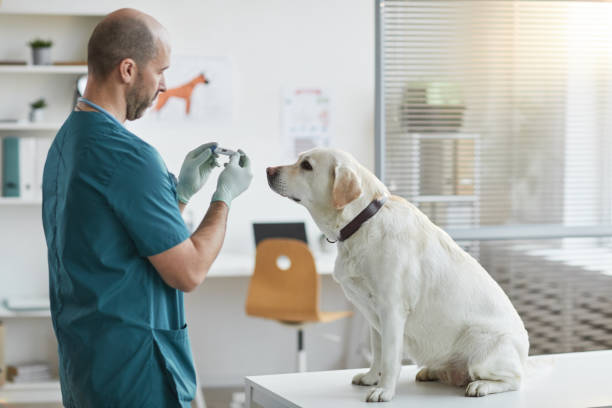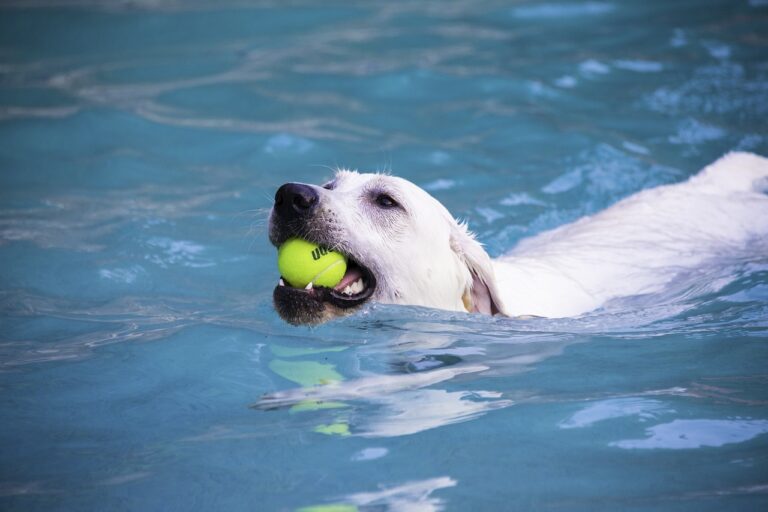Labrador Retriever with Pink Nose: Factors and Health Implications
Have you ever wondered what owning a Labrador Retriever with pink nose would be like? Not only because of their cuteness but also due to their exceptional abilities, these dogs have become extremely popular. This post will examine the characteristics that make these pets so unique, discuss their advantages to families, and compare them to the more common, black-nosed gerbils.
As a dog lover with years of experience, I’ll also discuss my interactions with these beautiful animals. Come along as we explore the mysteries of the pink-nosed Labrador Retriever and learn more about their endearing personality.
Understanding Labrador Retriever with Pink Nose Pigmentation
Explore the fascinating realm of Labrador Retrievers who have a charming characteristic called Pink Nose Pigmentation. If you’re curious about the history and significance of their skin and nose color, you’ve come to the perfect place! By the end of this piece, you’ll better grasp how this intriguing trait affects these beautiful pets and the secrets behind it.
🐶Normal Nose Colors in Labrador Retrievers
Labrador Retrievers typically exhibit nose colors in shades of black, brown (also known as chocolate), or yellow. These classic nose hues are the most common and widely recognized in this beloved breed, adding to their iconic and charming appearance.
🐾Black
The black nose color is one of the most traditional and prevalent variations found in Labrador Retrievers. It is a distinguishing characteristic that adds to their striking appearance. The black nose complements their coat color and highlights their expressive eyes, making these dogs even more captivating and endearing to all who encounter them.
🐾Brown
The brown nose color, often referred to as chocolate, is another common and sought-after variation in Labrador Retrievers. It pairs beautifully with their chocolate-colored coat, creating an appealing and harmonious appearance. Brown-nosed Labradors exude warmth and charm, captivating hearts with their sweet demeanor and unique nose coloration.
🐾Liver
Labrador Retrievers, “liver” is a term used to describe the brown or chocolate nose color. It is a recognized variation in the breed, adding to the uniqueness and appeal of these beloved canines. The liver nose color complements their coat and personality, making them even more endearing.
Labrador Retriever with Pink Nose: Causes and Variations
Labrador Retriever with pink nose is a fascinating variant that attracts the attention of dog lovers all around the world. What factors lead to this unusual coloring? In what ways does it diverge from the standard, black-nosed Labrador?
The genetic and environmental variables that contribute to this interesting quality will be discussed in detail. Come learn about and appreciate the unique characteristics of Labrador Retrievers with pink nose, whether you’re a breeder, a dog lover, or just someone who’s always been fascinated by the mysteries of the natural world.
🐶Dilute Coat Color Genes and its Effect on Nose Pigmentation
Dilute coat color genes can have an impact on nose pigmentation in Labrador Retrievers. These dilution genes can affect the intensity of the coat color, leading to lighter shades like silver or charcoal. When a Labrador inherits dilute coat color genes, it can sometimes result in a corresponding dilution of nose pigmentation.
In some cases, dilute coat color genes can lead to a fading of the nose color, causing it to appear lighter than usual. This phenomenon is often observed in dogs with lighter coat colors, such as silver or charcoal Labradors, which may have a lighter or partially pink nose. It’s essential to note that this fading of nose pigmentation due to dilution genes is a natural variation and doesn’t affect the dog’s overall health or well-being.
The nose’s color might change slightly as the dog grows older or with seasonal changes, but it usually remains within the accepted range defined by breed standards. Breeders and Labrador enthusiasts should be aware of these dilution effects and consider them when breeding for specific coat colors and nose pigmentation to maintain the breed’s standard and characteristics.
🐶Nose Fading in Older Labradors and Changes Over Time
As Labrador Retrievers age, it is not uncommon for their nose color to experience some fading or lightening. This phenomenon, often referred to as “snow nose” or “winter nose,” occurs due to a decrease in the production of melanin, the pigment responsible for the nose color.
In “snow nose,” the once black or dark-colored nose may turn lighter, resembling a paler shade of gray or pink. This change is usually temporary and reverses with the return of warmer weather or as the dog’s melanin production stabilizes. In some cases, the nose color might not fully revert to its original shade, and it may remain slightly lighter than before.
While nose fading in older Labradors is a natural occurrence, monitoring the dog’s overall health and well-being is essential. If there are any concerns about the nose color changes or other accompanying symptoms, it is advisable to consult a veterinarian for a thorough examination and appropriate guidance.
🐶Seasonal Changes and their Impact on Labrador Retriever with Pink Nose Color
Seasonal changes can have an impact on the nose color of Labrador Retrievers. Some Labradors experience a phenomenon known as “snow nose” or “winter nose” during colder months. The exact cause of snow nose is not fully understood, but it is believed to be related to a decrease in melanin production during colder weather.
It’s important to note that snow nose is typically a benign and temporary condition and doesn’t cause any harm to the dog’s health. However, if there are concerns about the nose color changes or if it doesn’t revert to its original color, it is best to consult a veterinarian for a proper evaluation. Seasonal changes can influence the nose color in Labradors, with snow nose being a common and reversible occurrence during colder months.
Labrador Retrievers with Pink Nose: Health Implications of Pink Noses in Labs
Labradors’ cute pink noses are a visual treat, but this endearing quality has deeper significance. Do you ever wonder if there are risks to your dog’s health because of this unusual pigmentation? Dig deep into scientific data and expert perspectives to learn about the potential risks and advantages of pink noses in Labradors. If you’re a pet lover, a Lab owner, or just plain interested, come along as we investigate how this unique trait affects the health of our furry friends.
🐶Understanding Potential Health Concerns Associated with Nose Pigmentation
The nose pigmentation in Labrador Retrievers, regardless of color, generally does not pose any direct health concerns. However, it’s essential to be aware of potential issues associated with certain nose colors.
Labradors with lighter or pink noses may have increased sensitivity to UV rays, leading to sunburns or skin irritation. Pet owners should consider applying pet-safe sunscreen on their dog’s nose when exposed to prolonged sunlight. For dogs with black or dark-colored noses, nose discoloration or fading could be a sign of health concerns like an autoimmune disorder or vitamin deficiency. If there are noticeable changes in the nose color, especially without seasonal variation, it’s best to seek veterinary advice for proper evaluation and diagnosis.
Regular veterinary check-ups are essential for monitoring a Labrador’s overall health, regardless of nose color. Maintaining a balanced diet, providing adequate exercise, and addressing any health issues promptly can ensure the well-being and longevity of these beloved companions.
🐶Monitoring for Sunburn and UV-Related Issues in Dogs with Pink Noses
It is vital to keep an eye out for sunburn and UV-related problems in dogs with pink noses to maintain their wellbeing. Owners of pets can take the following actions:
- Minimize outside activity between 10 am and 4 pm, when UV rays are at their greatest, to reduce your exposure to the sun.
- Create shady spots in your backyard or when taking your dog to the park to protect them from the sun’s rays.
- Before going outside, apply pet-safe sunscreen to your dog’s pink nose. This sunscreen is especially made for dogs. reapply as instructed.
- Use doggie helmets or UV-blocking clothes to protect their nose from too much sun exposure.
- Observe your dog’s nose frequently for indications of sunburn, such as redness, swelling, or peeling. Limit outside activity and see a veterinarian if any signs are seen.
Prevent sunburn in Labradors and other dogs with pink noses by taking precautions and monitoring sun exposure.
🐶Importance of Regular Veterinary Check-ups and Nose Care
Regular veterinary check-ups and nose care are essential for maintaining the health and well-being of Labrador Retrievers and all dogs.
- Health Issues Early Detection through routine examinations, veterinarians can spot potential health issues early, increasing the likelihood of a successful recovery and halting the progression of diseases.
- Veterinary checkups allow for the provision of immunizations, parasite control, and dental care, lowering the risk of infectious diseases and preserving general health.
- Regular nose exams can aid in spotting any pigmentation changes, spotting anomalies, and addressing potential problems with nose color or skin sensitivity.
- Veterinarians can offer advice on adequate nutrition and diet suited to each dog’s needs in order to maintain overall health and ward off problems brought on by obesity.
- Your beloved Labrador will live a longer, healthier, and more pleasant life with regular veterinary care and nose care, ensuring they are happy and active companions for years to come.
Protecting Labrador Retriever with Pink Nose
As we go along, we will provide you with the background information and helpful hints you need to keep your animal friend’s pink nose safe. Let’s go from learning about their sun sensitivity to implementing preventative measures.
🐶Providing Shelter and Shade to Prevent Sun Exposure
Providing shelter and shade to prevent sun exposure is crucial for protecting dogs, especially those with pink noses, from harmful UV rays and potential sunburns.
- Create covered areas in your garden with the help of umbrellas, canopies, or other natural cover like trees. This makes it possible for your dog to relax comfortably away from the sun.
- Make sure your Labrador has access to a warm, cozy dog home where they may hide out during the summer.
- Limit outside activities during peak sun hours and schedule inside playtime to lessen your exposure to the sun.
- Use cooling mats or cushions in shaded locations to keep your dog happy and cool.
- Carry a portable umbrella or parasol to give shade during outdoor adventures if you’re on the go.
Prioritize cover and shade for your dog to reduce sun exposure, reduce risk, and make the environment safer.
🐶Using Dog-safe Sunscreens and Nose Balms for Protection
Using dog-safe sunscreens and nose balms effectively provides additional protection for Labrador Retrievers with pink noses.
- Select a sunscreen that has been designed exclusively for dogs. If dogs consume the chemicals in human sunscreen, they may suffer harm. Cover your dog’s pink nose and any other exposed areas with sunscreen when going outside. In particular, after swimming or extended outdoor activity, reapply as instructed.
- Natural elements included in nose balms, such as shea butter or beeswax, can help hydrate and shield your dog’s nose from sunlight and dryness. Before going outside, gently rub the balm on their nose.
- Depending on your dog’s particular requirements and skin sensitivity, they can suggest suitable sunscreen and nose balm products.
Sunscreen and nose balms are helpful, but providing shade and limiting peak sun exposure are essential.
🐶Understanding the Importance of Hydration and Proper Nutrition
Hydration and proper nutrition are fundamental for the health and well-being of Labrador Retrievers and all dogs.
- Access to clean, pure water is something that must always be provided. Water intake that is sufficient improves organ health, promotes digestion, and guards against dehydration.
- Nutritionally sound eating habits are crucial, and should be based on your dog’s age, size, and degree of exercise. Optimal growth, energy levels, and immunological function are ensured by high-quality dog food that contains vital nutrients, vitamins, and minerals.
- By eating well, one can maintain a healthy weight and fend against problems with their joints, their blood pressure, and other ailments.
- A good diet helps maintain a coat and skin that are free from allergies and irritations, which lowers the likelihood of these conditions.
- In order for a dog to be healthy overall and live a longer, happier life with fewer health issues, regular nutrition and hydration are essential.
See a veterinarian for optimal nutrition and hydration programs for your Labrador to ensure their long-lasting companionship.
Frequently Asked Questions
Q: My Labrador’s nose is pink; why is that?
A: As a dog gets older, its nose may start to lose color. Injury can also affect the nose which can turn pink as it heals if a dog has some sort of trauma, like a scrape or an abrasion. Usually, after a while, the pigment will return.
Q: What shade ought a Labrador’s nose to be?
A: Some of the pups’ noses will begin to darken around the second week. Most typically, a fully developed lab will have a black nose and amber to dark brown eyes. Their noses may occasionally lighten as they age and occasionally depending on the season, most notably in the winter.
Q: Why do the noses of Labradors change color?
A: Your dog most likely has “winter nose” or “snow nose,” which is a condition that can afflict several breeds, including Labradors, some northern breeds, and even smaller dogs like terriers. The shorter, colder winter days will cause a naturally black nose to lose some of its color.
Q: Will my dog’s pink nose eventually become black?
A: If your puppy’s pink nose eventually becomes black, you’ll know it early on. You will see a significant change in pigment in the first 8 to 12 weeks of development. There’s still a potential that your puppy’s nose will alter during the next months if it hasn’t already completely darkened.
Q: Are pink-nosed dogs in good health?
A: Although a dog’s pink nose is not inherently unhealthy, it might be a sign of other health problems. For instance, sunburn, which can cause skin cancer in dogs, can cause a pink nose, which is a symptom.
Final Thoughts
The Labrador Retriever with pink nose adds a delightful and unique touch to this beloved breed. While genetics play a significant role in determining nose color, all Labradors, regardless of their nose shade, share the same friendly, loyal, and affectionate nature. Ensuring proper care, such as monitoring sun exposure, using dog-safe sunscreens and nose balms, and providing shelter and shade, helps protect their delicate noses.
Regular veterinary check-ups and a well-balanced diet ensure their overall health and well-being. Embracing the charm of these Pink-Nosed Labradors allows us to appreciate their individuality while celebrating the cherished qualities that make them exceptional companions.










